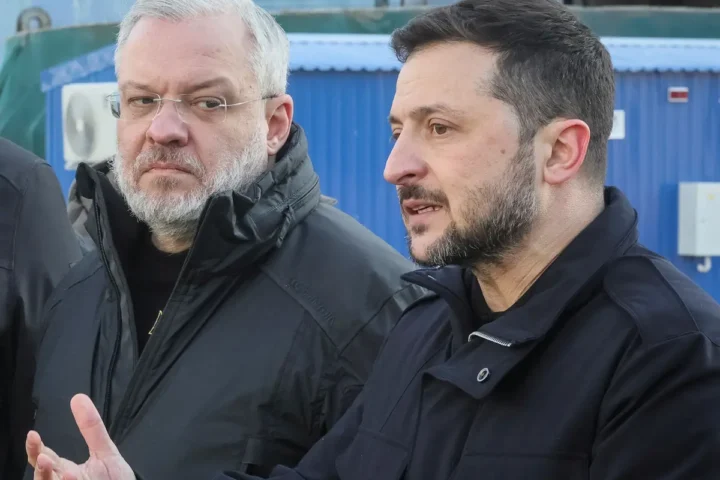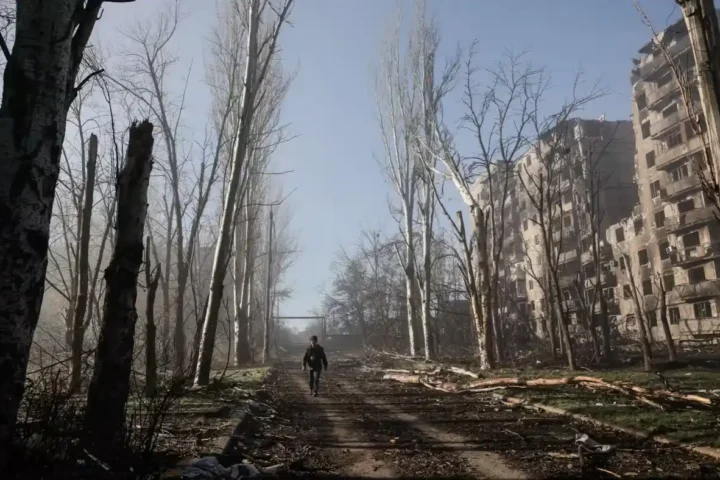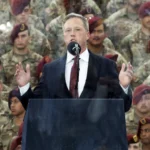In the early hours of June 13, around 3 a.m., air raid sirens sounded across Israel and emergency alerts lit up mobile phones. It was the first sign that Israel had launched a large-scale military campaign against Iran — without clear support from the United States. At the same time, massive explosions shook cities across Iran, jolting residents awake and plunging the region into chaos. According to The Economist, oil prices surged by 13% within hours, as the Middle East braced for a new phase of instability.
Israel’s Large-Scale Operation and Its Strategic Targets
The military campaign, dubbed Operation Rising Lion, has so far included at least six waves of airstrikes — with more expected. The targets: command centers, ballistic missile bases, air defense installations, and, reportedly, critical components of Iran’s nuclear program. Footage circulating on social media shows smoke rising from the uranium enrichment facility in Natanz, and the International Atomic Energy Agency (IAEA) confirmed the site was among those struck, adding that it is monitoring radiation levels.
Simultaneously, Israel carried out strikes aimed at Iran’s military and political leadership. In Tehran, residential buildings were hit, reportedly housing top commanders: the chiefs of staff of Iran’s military, air force, the elite Islamic Revolutionary Guard Corps (IRGC), and the Quds Force. Iranian state media reported that Hossein Salami, head of the IRGC, was killed. Another high-profile target, Fereydoon Abbasi, a nuclear scientist and former head of Iran’s Atomic Energy Organization, also died. Unconfirmed reports claim Ali Shamkhani, a senior advisor to Supreme Leader Ayatollah Ali Khamenei overseeing nuclear matters, was injured — suggesting that Israel is also targeting the regime’s political leadership, even as Israeli officials insist that regime change is not the goal.
Israeli intelligence states the strike was triggered by Iran allegedly crossing a dangerous nuclear threshold. According to an Israeli official, Tehran has accumulated enough fissile material to prepare “15 nuclear devices within days” and is rapidly manufacturing components for nuclear weapons. On June 12, the IAEA’s board of governors declared Iran in breach of its nuclear non-proliferation obligations — largely over past violations.
“Iran’s nuclear program has passed the point of no return,” said IDF Chief of Staff Eyal Zamir. In a pre-recorded address, Israeli Prime Minister Benjamin Netanyahu warned of the risk of a “nuclear holocaust.” However, U.S. intelligence has a different assessment: as recently as March, Director of National Intelligence Tulsi Gabbard stated that Iran is not building a nuclear weapon and that Khamenei has not authorized any weapons program since suspending it in 2003.
Disagreements with the U.S. and Regional Reactions
This discrepancy in threat assessment may explain why the U.S. was not directly involved in the Israeli operation. According to Secretary of State Marco Rubio, Israel acted “unilaterally,” and Washington “was not involved.” Nevertheless, Israeli sources claim they received unspecified “support” from the U.S. and had notified President Donald Trump’s administration ahead of time. On June 12, Trump stated: “I prefer an agreement. As long as talks are ongoing, I don’t want them [Israel] going in, because I think that would blow it.”
Despite the strikes, Trump expressed hope that diplomacy could continue. More negotiations between U.S. special envoy Steve Witkoff and Iranian officials were scheduled for June 15.
Gulf states have so far remained silent, though many — including Saudi Arabia and the UAE — had spent months urging Trump to restrain Israel. While these nations may secretly welcome a blow to Iran, their regional rival, they are deeply concerned about retaliation. Major American military bases are located in Bahrain and Qatar, while Saudi Arabia has publicly condemned what it called a “heinous act of aggression.”
Israel’s campaign appears poised to continue. The Israeli Air Force operates around 300 manned fighter jets and attack drones, but logistical constraints — including limited aerial refueling capacity — restrict how many aircraft can be deployed simultaneously. Each wave reportedly consists of several dozen aircraft. The initial strikes likely involved stealth F-35s and air-launched ballistic missile carriers, followed by waves of F-15s and F-16s operating at closer range.
There are also reports of sabotage operations by Israeli agents on the ground inside Iran. Back in October, Israel significantly degraded Iran’s air defenses, including Russian-made S-300 systems, in a move that was both retaliation for a previous Iranian missile barrage and preparation for the current, broader campaign.
A key question remains: how much damage has been inflicted on Iran’s deeply buried nuclear facilities? Experts note that even America’s largest bunker-busting bomb — the GBU-57 — would require multiple hits on the same point to be effective, and Israeli aircraft cannot carry this weapon. Israel may have instead targeted entry points, tunnels, and ventilation systems to disable the facilities temporarily.
Iran’s Potential Response and Escalation Scenarios
But as The Economist notes, a retaliatory strike by Iran now seems all but certain. Supreme Leader Khamenei has promised a “harsh response,” and Israeli officials say the first counterattack could occur within hours.
Iran is expected to use ballistic missiles — harder to intercept than drones — as it did in October 2024, when at least 20 Iranian missiles bypassed missile defense systems. Both countries are working to replenish their weapons stockpiles in anticipation of further escalation. Iran’s ability to harm Israel will depend in part on how successful Israel’s initial strikes were in neutralizing missile launch sites and whether Iran still has enough firepower to overwhelm Israeli and American defenses.
The U.S. military retains a strong presence in the region, including aircraft carriers and strike aircraft that were recently used in bombing campaigns against Yemen’s Houthi rebels. These assets are likely to be activated to protect Israel — but their involvement could provoke further escalation, including possible Israeli strikes on Iran’s political, economic, and infrastructure targets, as has already occurred in Yemen.
Hezbollah, once considered Iran’s primary retaliatory proxy, has been severely weakened; its missile arsenal and leadership were heavily damaged in previous Israeli strikes. This limits Iran’s traditional options and could push it toward more direct and dangerous actions: attacking U.S. bases or embassies in the region, disrupting oil shipping through the Strait of Hormuz — through which 21% of the world’s oil flows — or even targeting Gulf states directly. These actions would almost certainly drag the United States into full-scale war and could result in devastating retaliatory strikes against Iran’s nuclear infrastructure.
Israel’s assault on Iran has been years in the making. The coming days will reveal which country was better prepared for this confrontation — and whether Trump’s America can resist being pulled into a conflict it has long tried to avoid. Perhaps this campaign will permanently remove the nuclear threat posed by Iran. But it may just as easily spark an uncontrollable war — and further solidify Tehran’s determination to develop the bomb.
This article was prepared based on materials published by The Economist. The author does not claim authorship of the original text but presents their interpretation of the content for informational purposes.
The original article can be found at the following link: The Economist.
All rights to the original text belong to The Economist.


















